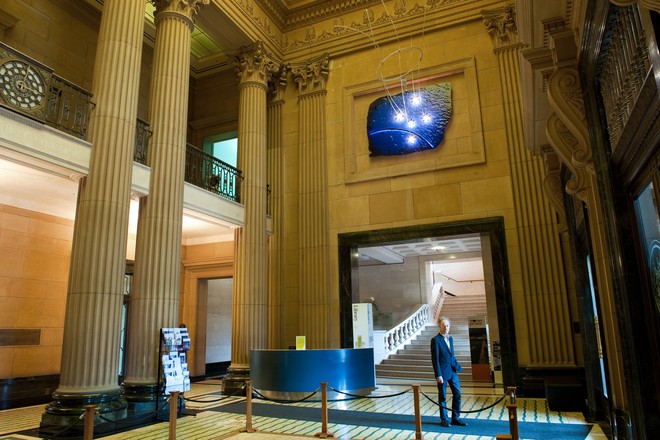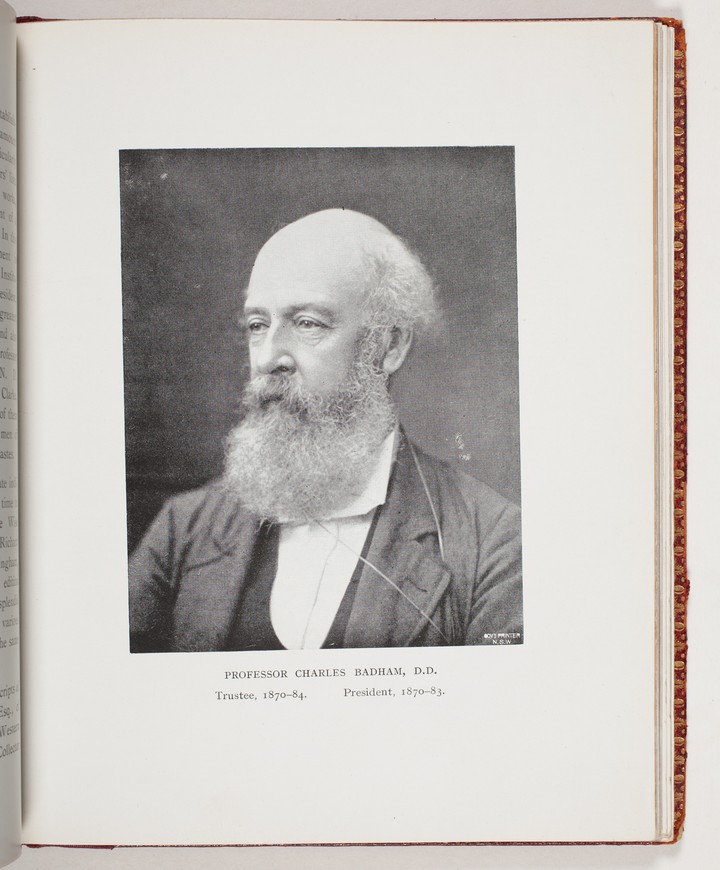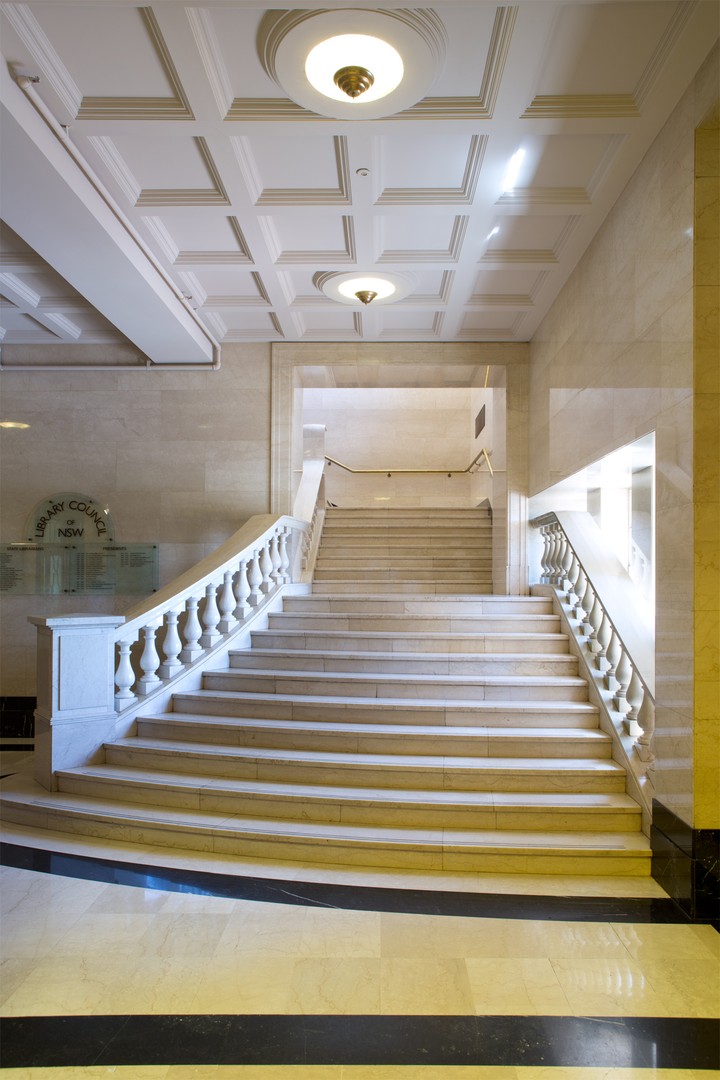Mitchell Vestibule
c.a 1942
One of the most dramatic spaces in the Mitchell Library, the vestibule showcases the work of some of Sydney’s finest artists and craftspeople and is rich with symbolic meanings that reflect the spirit and history of the Library.
The inscription high on the eastern wall is from the influential Hero as Man of Letters lecture series, given by Scottish writer and philosopher Thomas Carlyle in the 1840s; the sculpture opposite by Jon Hawley is modelled on the earliest-known printed description of the stars of the Southern Cross, which appears in Lettera di Andrea Corsali, published in Florence in 1516. The Library’s visionary principal librarian William Ifould is honoured with a portrait bust, and Library benefactor Sir William Dixson with the staircase of white marble which leads to the Dixson galleries on the first floor.
The glass doors leading to the portico are etched with the stamp of the Library, then known as the Public Library of NSW. The design is based on the seal of the Australian Subscription Library, a privately run library founded in 1826 and later purchased by the NSW government as the basis of the Public Library. The oil lamp represents the ‘lamp of knowledge’, around which is the NSW state motto ‘Orta recens quam pura nites’ which translates to ‘Newly risen, how brightly you shine.’
How brightly you shine
Charles Badham was the first president of the Library’s Board of Trustees and professor of Classics and Logic at the University of Sydney. In 1879 he chose the motto ‘Orta recens quam pura nites’ (Newly risen, how brightly you shine) for the Garden Palace, built in what is now the Royal Botanic Gardens for the Sydney International Exhibition of 1879-1880. Designed in just four days, the spectacular structure based on London’s Crystal Palace took 800 workers eight months to complete. In September 1882 in just six hours, the entire building burnt to the ground (arson was suspected but nobody was ever charged). The motto, however, remained and was adopted by NSW as the state motto. It now features on the Portico’s glass entry doors, encircling the lamp of knowledge.
All that survived of the Garden Palace were the gates, which are still visible today on Macquarie Street, about 250 metres from the Library towards Circular Quay.
Masters of marble and mosaic
The Melocco brothers – Peter, Anthony and Galliano – arrived in Sydney from Italy in the early 1900s to become the city’s leading marble and mosaic workers. They were commissioned to work on some of the city’s most significant public buildings, including the crypt of St Mary’s Cathedral, the Commonwealth Bank in Martin Place, the State Theatre, Central Railway, Anzac Memorial in Hyde Park, and David Jones and Farmers (now Myer) department stores. They also made the altar floor in Christchurch Cathedral in New Zealand.
Stairway to knowledge
The marble staircase including the walls and balusters are faced with white Botticino marble from southern Italy. Built by the Melocco Brothers in 1958 as part of the Dixson Library additions and officially opened in 1959, the staircase is dedicated to the memory of Sir William Dixson. At the time of the opening, it was called ‘a stairway to knowledge’ by the Daily Telegraph.
Footnotes
J A Wright, A report on the history and principal
features of the State Library of NSW building, 1981, p 28



 Back to list
Back to list
